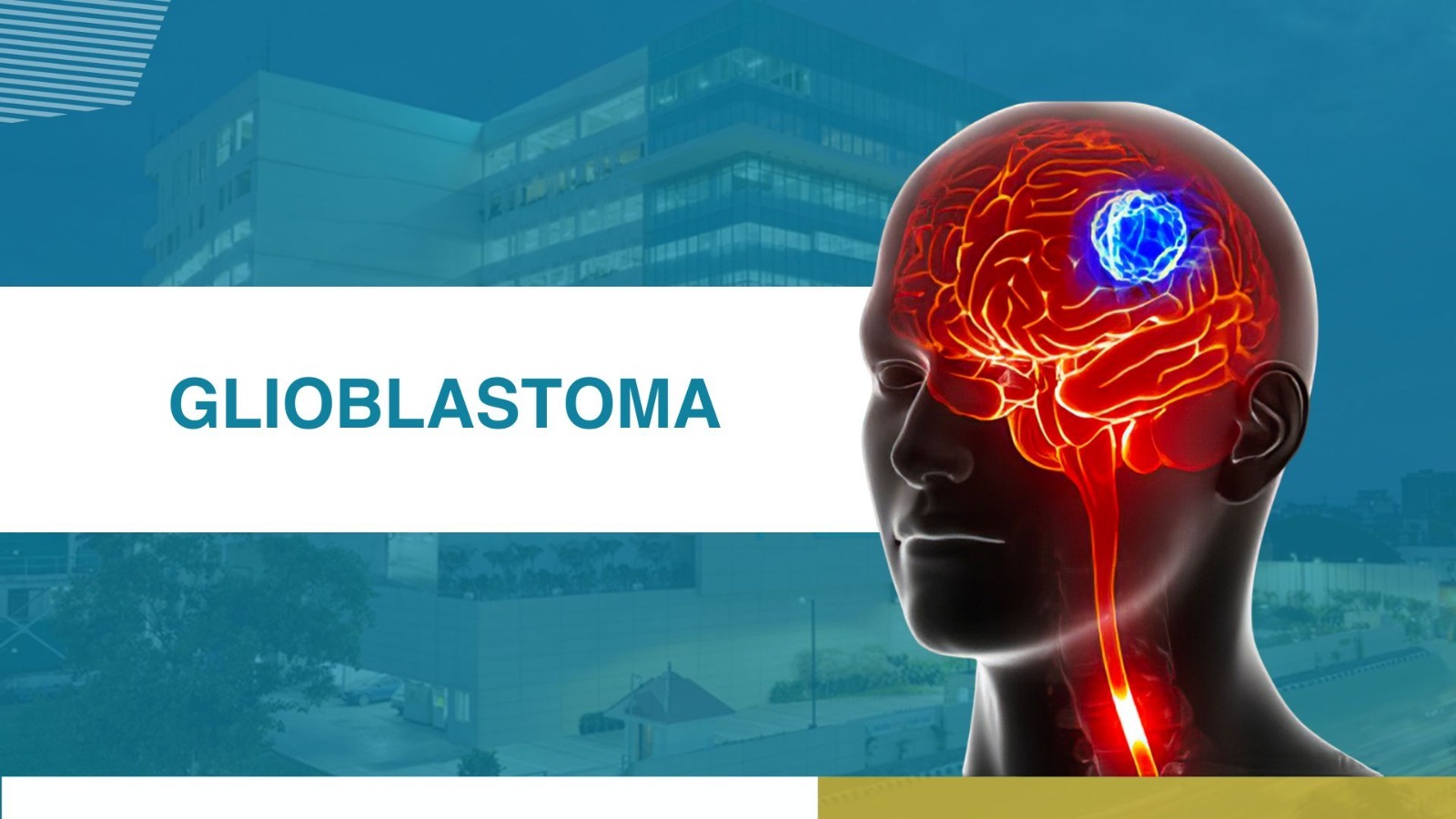Why is it difficult to treat glioblastoma?
Glioblastoma is a type of brain cancer that is typically aggressive and grows rapidly. It is frequently difficult to completely remove and recurs.
One of the most difficult aspects of treating glioblastoma is that it is frequently resistant to chemotherapy and radiation. Tumor cells can also evade the immune system, making it difficult for the body to combat cancer.
Another issue is that glioblastoma tumors are frequently found in areas of the brain that are difficult to reach surgically. This can make removing the entire tumor difficult and may increase the risk of complications during surgery.
Finally, glioblastoma tumors frequently have a complex network of blood vessels, making surgical removal difficult. The blood vessels can also help tumor cells spread to other parts of the brain, complicating treatment.
Overall, the complexity of glioblastoma treatment is determined by a number of factors, including the location and size of the tumor, the patient's overall health, and the patient's age. Glioblastoma is typically treated with a combination of surgery, chemotherapy, and radiation therapy.
Best treatment for glioblastoma
The best treatment for glioblastoma is determined by a number of factors, including the tumor's location and size, the patient's overall health, and the patient's age. Glioblastoma is typically treated with a combination of surgery, chemotherapy, and radiation therapy.
Surgery: The goal of glioblastoma surgery is to remove as much of the tumor as possible. This is frequently difficult because the tumor grows into the surrounding brain tissue and can have a complex network of blood vessels.
Chemotherapy is the use of drugs to destroy cancer cells. Because tumor cells are resistant to radiation therapy, it is frequently used to treat glioblastoma.
Other treatments include: In addition to surgery, chemotherapy, and radiation therapy, other treatments for glioblastoma may be used, such as immunotherapy, which boosts the immune system to help fight the cancer, and targeted therapy, which targets specific proteins or genes that help cancer cells grow and survive.
It is important to note that glioblastoma is a very aggressive type of brain cancer with limited treatment options. Glioblastoma has a poor prognosis, with most patients living only a few months to a few years after diagnosis. However, with appropriate treatment and ongoing care, some patients may live longer.
How does immunotherapy help treat glioblastoma?
Immunotherapy is a type of cancer treatment that stimulates the immune system to fight the disease. It works by boosting the body's natural defences so that cancer cells can be recognised and attacked.
Checkpoint inhibitors, which block proteins that cancer cells use to evade the immune system, and cancer vaccines, which help the immune system recognise and attack cancer cells, are two types of immunotherapy that may be used to treat glioblastoma.
One of the most difficult aspects of treating glioblastoma is that the tumor cells can evade the immune system, making it difficult for the body to combat the cancer. Immunotherapy can assist in overcoming this obstacle by increasing the immune system's ability to recognise and attack cancer cells.
It should be noted that immunotherapy is not a cure for glioblastoma and may not be effective in all patients. It is usually used in conjunction with other treatments like surgery, chemotherapy, and radiation therapy. Immunotherapy effectiveness varies from patient to patient. Immunotherapy may provide significant benefits to some patients while providing little benefit to others.
Why is proton beam therapy effective for treating glioblastoma?
Proton beam therapy is a type of radiation therapy that kills cancer cells by using high-energy protons. It is occasionally used to treat glioblastoma, a type of brain cancer that is typically aggressive and grows quickly.
One of the primary benefits of proton beam therapy is that it can deliver a high dose of radiation to the tumor while exposing as little healthy tissue as possible. This is because protons can be precisely targeted at the tumor, allowing radiation to be delivered directly to cancer cells while causing less damage to surrounding tissue.
This is especially advantageous for brain tumors because the brain is extremely sensitive to radiation and can be damaged by high doses. Proton beam therapy can help reduce the risk of side effects and long-term complications by limiting the exposure of healthy brain tissue to radiation.
It should be noted that proton beam therapy is not a cure for glioblastoma and may not be effective in all patients. It is usually used in conjunction with other treatments like surgery, chemotherapy, and radiation therapy. The efficacy of proton beam therapy varies from patient to patient. Some patients may benefit significantly from proton beam therapy, while others may not benefit significantly.
Surgery for treating glioblastoma
Glioblastoma, a type of brain cancer that is typically aggressive and grows quickly, is commonly treated with surgery. The goal of glioblastoma surgery is to remove as much of the tumor as possible. This is frequently difficult because the tumor grows into the surrounding brain tissue and can have a complex network of blood vessels.
Glioblastoma can be treated with a variety of surgical procedures, including:
- Craniotomy: This is a surgery that involves opening the skull to gain access to the brain. After that, the surgeon will remove as much of the tumor as possible.
- Stereotactic surgery: This is a type of surgery in which the surgeon is guided to the tumor by a special frame placed on the head and advanced imaging techniques. It is less invasive than a craniotomy and may result in a quicker recovery time.
- Awake craniotomy: This is a type of surgery in which the patient remains conscious throughout the procedure. To ensure that the tumor is not interfering with important brain function, the surgeon may ask the patient to perform simple tasks such as moving a limb.
It is critical to understand that surgery is not a cure for glioblastoma and may not be an option for all patients. The effectiveness of surgery is determined by a number of factors, including the location and size of the tumor, the patient's overall health, and the patient's age. To improve the chances of success, surgery is usually used in conjunction with other treatments such as chemotherapy and radiation therapy.
Chemotherapy for treating glioblastoma
Glioblastoma, a type of brain cancer, is frequently treated with chemotherapy. Chemotherapy is the use of drugs to destroy cancer cells. It is typically administered in conjunction with other treatments such as surgery and radiation therapy.
Several chemotherapy drugs, including temozolomide and nitrosoureas, are used to treat glioblastoma. These medications are typically administered in cycles, with a period of treatment followed by a period of rest to allow the body to recover. The specific chemotherapy regimen and dosage will be determined by the individual patient and the type of glioblastoma they have.Chemotherapy for glioblastoma is typically administered as an outpatient treatment, which means that the patient is not required to stay in the hospital. However, some people may experience chemotherapy side effects such as nausea, vomiting, hair loss, and fatigue. These side effects are usually manageable with medications and other forms of supportive care.
Chemotherapy for glioblastoma is typically administered as an outpatient treatment, which means that the patient is not required to stay in the hospital. However, some people may experience chemotherapy side effects such as nausea, vomiting, hair loss, and fatigue. These side effects are usually manageable with medications and other forms of supportive care.
It is critical to discuss with your doctor the potential benefits and risks of chemotherapy, as well as any concerns you may have about the treatment. Your healthcare team can help you understand the risks and benefits of chemotherapy, as well as what to expect during treatment.
Radiation for glioblastoma
Glioblastoma is a type of brain cancer that is usually treated with chemotherapy, surgery, and radiation therapy. Radiation therapy uses high-energy X-rays or other forms of radiation to kill cancer cells and shrink tumors.
External beam radiation therapy and stereotactic radiosurgery are two approaches to delivering radiation therapy for glioblastoma. External beam radiation therapy involves delivering radiation to the brain from outside the body, whereas stereotactic radiosurgery involves delivering a high dose of radiation to a specific area of the brain in a single treatment session using a specialised machine.
Radiation therapy can be an effective treatment for glioblastoma, and it is frequently used in conjunction with other therapies to increase the likelihood of success. It is important to note, however, that radiation therapy can cause fatigue, skin irritation, and hair loss. Before beginning treatment, it is critical to discuss the potential risks and benefits of radiation therapy with your doctor.
Radiation therapy versus proton beam therapy for treating glioblastoma
External beam radiation therapy and proton beam therapy, both of which use high-energy radiation to kill cancer cells and shrink tumors, can be used to treat glioblastoma. There are, however, some significant differences between the two approaches.
The type of radiation used is one distinction. External beam radiation therapy makes use of X-rays, whereas proton beam radiation therapy makes use of protons, which are subatomic particles. Another distinction is the method by which the radiation is delivered. External beam radiation therapy uses a machine outside the body to deliver radiation, whereas proton beam therapy uses a machine to deliver a beam of protons directly to the tumor.
There is some evidence that proton beam therapy may be more effective at targeting brain tumors because it can deliver a high dose of radiation to the tumor more precisely while minimising exposure to surrounding healthy tissue. Proton beam therapy, on the other hand, is not widely available and is typically more expensive than external beam radiation therapy.
To determine the best treatment option for your specific case, it is critical to discuss the potential risks and benefits of both approaches with your doctor.
Types of glioblastoma
Glioblastoma is a type of brain cancer that is distinguished by the presence of abnormal cells that grow and divide rapidly, resulting in the formation of a tumor. Glioblastoma is classified into several subtypes based on the type of cells that make up the tumor and the presence of genetic changes. Among the most common subtypes of glioblastoma are:
- Classical glioblastoma: This subtype is composed of cells that resemble normal brain cells and is distinguished by the presence of a protein known as IDH1.
- Mesenchymal glioblastoma: This subtype consists of cells with a more spindly appearance and is distinguished by the presence of a protein known as PDGFRA.
- Pronueral glioblastoma: This subtype is composed of cells with a more neural-like appearance and is distinguished by the presence of a protein known as TP53.
- Neural glioblastoma: This subtype is composed of cells that resemble normal nerve cells and is distinguished by the presence of a protein known as ATRX.
It is important to note that different subtypes of glioblastoma have different prognoses and respond differently to treatment. To understand your prognosis and treatment options, it is critical to discuss the specific subtype of glioblastoma with your doctor.
Is glioblastoma hereditary?
Glioblastoma is a type of brain cancer that does not usually run in families. Glioblastoma usually develops on its own and is not passed down from generation to generation. However, in a few cases, glioblastoma has been linked to inherited genetic mutations, such as those in the TP53 gene. These cases, however, are uncommon, and most people with glioblastoma do not have a family history of the disease. It is important to note that the risk of developing glioblastoma increases with age and that men are more likely than women to develop it.
To know more about Proton Beam Therapy and Apollo Proton Cancer Centre, write to us at apollocancercentres@apollohospitals.com or call us on 1800 203 1066 / +91 40 48964515.

Copyright © 2023 Apollo Proton Cancer Centre. All Rights Reserved





